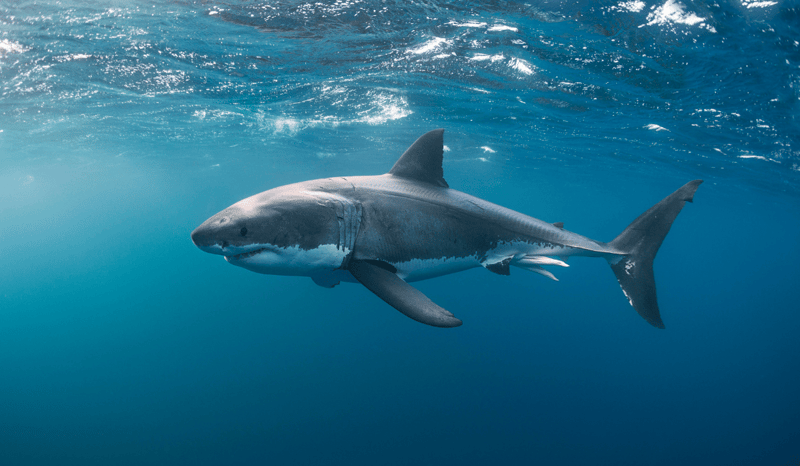
Why don’t aquariums keep great white sharks? Learn the truth behind why you never see great white sharks in aquariums.
Great white sharks are often portrayed as ruthless predators—villains of the sea, thanks to decades of sensationalized media. But the truth couldn’t be further from the fear-driven narrative.
These apex predators are vital to marine ecosystems, navigating vast ocean territories with grace and purpose. And unlike other animals who are forced to suffer in captivity, you’ll never see a great white shark performing tricks in a marine park or circling endlessly in a glass tank.
Why? Because captivity doesn’t just fail great white sharks. It kills them.
Sharks Are Not Exhibits—They’re Individuals
Every great white shark is a sentient, feeling being. They are not spectacles or science experiments. They are individuals who deserve autonomy, freedom, and a life free from harm. Yet, for decades, aquariums have tried to confine them, only to fail repeatedly.
Captive great whites rarely survive more than a few days or weeks. Some suffer injuries from ramming into tank walls. Others had trouble eating. Most show clear signs of distress—lethargy, disorientation, erratic behavior. These aren’t anomalies. They’re symptoms of profound suffering.
Constant Movement Isn’t a Preference—It’s Survival
Great white sharks rely on a process called ram ventilation, which requires them to swim continuously to breathe. In captivity, this natural behavior is hindered by walls and barriers, forcing them into unnatural patterns or causing them to collide with the tank itself.
Even bigger tanks, like those at the Monterey Bay Aquarium—which famously housed a juvenile great white for 198 days—are no match for the open ocean. That shark was ultimately released due to growing concerns about her wellbeing and the wellbeing of others sharing her tank. As she was maturing into an adult shark, she killed at least two other captive sharks and became increasingly dangerous for staff to care for. Monterey Bay later acknowledged the challenges and ethical concerns and ended its great white captivity program in 2011.
Though that hasn’t stopped other aquariums from trying to house a wonder of the deep. In 2017, a Japanese aquarium caught an 11.5-foot male adult great white—the first adult white shark ever held in captivity. The shark died just three days later.
Captivity Isn’t Conservation
Aquariums often justify keeping wild animals by claiming it’s for education or conservation. But there’s nothing educational about seeing an animal confined to an artificial environment, especially when that confinement leads to abnormal behavior and physical and psychological suffering.
True conservation respects animals’ natural behaviors, social structures, and habitat. It invests in protecting marine ecosystems, stopping overfishing, and preserving biodiversity, not keeping individuals behind glass for public amusement.
The repeated failures to keep great white sharks in captivity should serve as a wake-up call: just because we can capture an animal doesn’t mean we should. As public awareness grows around the suffering of orcas and dolphins in captivity, it’s vital to understand that all species experience harm in these conditions.
There Are Better Ways to Learn
If the goal is education, we have better options. Documentaries, virtual reality experiences, and responsible ecotourism offer people the chance to learn about sharks without exploiting them.
More importantly, we should invest in real conservation work: protecting ocean habitats, ending the shark fin trade, and reducing bycatch in commercial fishing. These efforts don’t just help sharks—they help the entire planet.
Let Them Stay Wild
Great white sharks don’t belong in aquariums because they were never meant to live in captivity. They are wild animals, perfectly adapted to life in the open ocean, where they play a crucial role in maintaining the balance of marine ecosystems.
Keeping them in tanks strips them of everything that makes them who they are. It’s not just unnecessary. It’s unethical.
The Bottom Line
Great white sharks cannot survive in captivity, and they shouldn’t be forced to try. Their biology demands freedom. Their behaviors require space. And their lives—each one—have inherent value. Not because they’re scary or majestic or profitable, but because they exist. Because they feel. Because they belong to themselves.
At World Animal Protection, we believe all animals deserve to live free from suffering. Great whites may never perform tricks for a crowd, but that’s exactly how it should be for everyone.
Want to help animals thrive in their wild habitats? Sign up for our FREE Animal Champions community and we’ll keep you updated on ways to take action for animals.